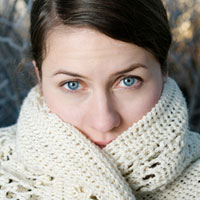Low temperatures and shorter days signal installation of cold season when respiratory diseases are more prevalent. Like spring, autumn gives birth or worsens respiratory type allergies, allergic rhinitis, respectively, which, although more mild and can be different from spring allergies, is manifested by:
– Sneezing;
– Headaches;
– Runny nose;
– Nasal congestion;
– Watery and itchy eyes.
Untreated properly, the above symptoms may be associated with signs that may suggest a sinusitis.
You must be careful not to confuse respiratory allergy manifestations to those of flu.
There may be an allergy if:
– Symptoms persist for more than a week, which is the usual duration of a cold.
– Symptoms are more severe in a particular place or season, and less severe in others.
– Rhinorrhea and mucous secretions are clear and abundant.
– Symptoms gradually installed, including sneezing and itching eyes and runny nose.
– Fever, muscle aches are usually present.
It can be a cold if:
– Symptoms include fever, muscle aches and sore throat.
– Typically, symptoms resolve after 7-10 days.
– Rhinorrhea and mucous secretions become more consistent and get a yellowish color.
– Ocular and nasal itching is minimal.
Colds and allergies have common symptoms, which may make it difficult to differentiate the two diseases. Visiting the doctor is very important for diagnosis and for selecting the most appropriate treatment.
Allergy to cold:
Exposure to low temperatures during the cold season may cause normal or abnormal skin reactions to cold, according to the specific individual.
One of the abnormal skin reaction to cold is urticaria, which is manifested by the appearance of lesions after exposure to wind, after bathing in cold water, after drinking cold drinks or just because of drop in temperature.
Clinically manifested by the appearance of urticarial plaques (erythema, edema and pruritus) on areas exposed to cold, which disappear within 2-3 hours after the removal of physical issue. Consulting a doctor is very important for correct diagnosis and appropriate treatment.
